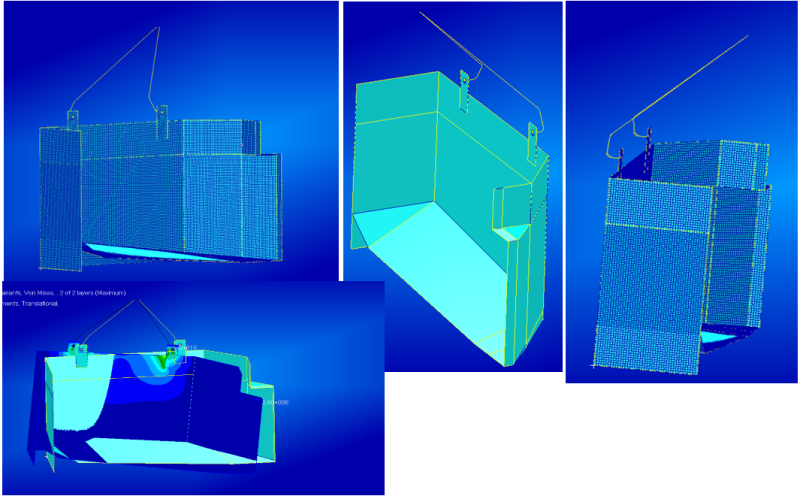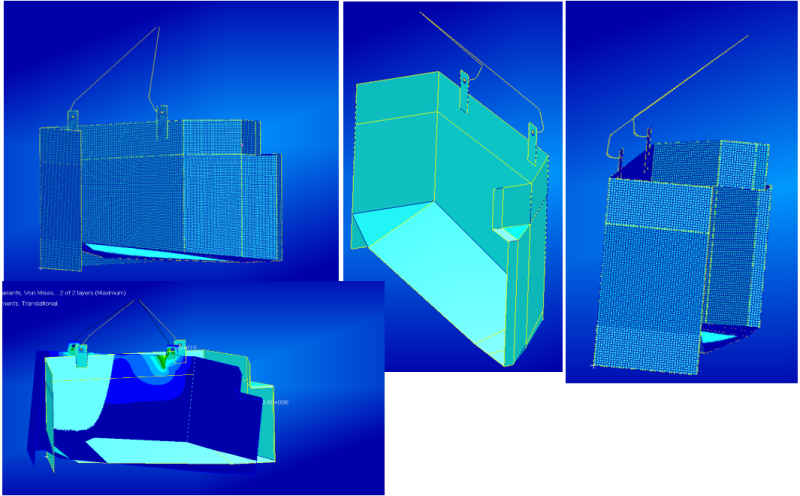Hi,
I am trying to calculate the stresses in a model with a geometry similar to a typical basket, but with the one end longer, hence the center of gravity does not go through the middle of the model.
I modelled half of the model in Patran, with half of the 2 hanger rods (2 triangular hangers attached to tank) as well with the symm plane constrained as well.
I used a pressure load to simulate the liquid in the tank and fixed the top point in all 3 translation directions (representing the crane hook)
The problem is that the deformations I am getting is massive as the model shifts to the left (due to the unbalanced mass and the CG not being in the middle?)
Is this due to the pressure load that is normal to the surface regardless of the tank orientation? How would I constrain the model If I wanted to obtain the stresses in the lugs, hangers and bottom of tank?
If I "hold" the tank at the 2 lugs without the hangers I get better results..


Thanks in advance
I am trying to calculate the stresses in a model with a geometry similar to a typical basket, but with the one end longer, hence the center of gravity does not go through the middle of the model.
I modelled half of the model in Patran, with half of the 2 hanger rods (2 triangular hangers attached to tank) as well with the symm plane constrained as well.
I used a pressure load to simulate the liquid in the tank and fixed the top point in all 3 translation directions (representing the crane hook)
The problem is that the deformations I am getting is massive as the model shifts to the left (due to the unbalanced mass and the CG not being in the middle?)
Is this due to the pressure load that is normal to the surface regardless of the tank orientation? How would I constrain the model If I wanted to obtain the stresses in the lugs, hangers and bottom of tank?
If I "hold" the tank at the 2 lugs without the hangers I get better results..


Thanks in advance
